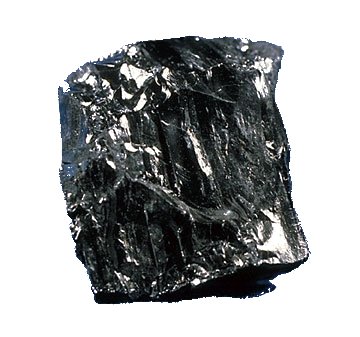Food prices have gotten a lot tamer of late. The Economist Food Price index out today is 3 percent down from last month, and after the astronomical prices earlier this year, just 22 percent above year-ago levels.
The Price of Soy
This piece by the AP’sMichael Casey poses a bit of a challenge for market believers like me:
Over the past decade, Indonesia went from growing more than half its soy to relying on the U.S. for 70 percent of it. Now the poor among this country’s 220 million people are going hungry because of changes thousands of miles beyond their shores. It is the same story for dozens of countries that came to depend on richer nations for cheap food, only to find themselves squeezed when prices start rising last year.
I believe the economists’ jargon here is a pecuniary externality, which would not in strict terms be viewed as a “market failure.” The necessary demand destruction is happening via the people Casey interviewed who are going hungry.
The Immutability of Scripture
One of religion’s longstanding problems is the immutability of scripture – the inevitable struggle over the inability of a fixed text to respond to changing conditions.
You can see this as Jews try to keep the Sabbath, and in modern fundementalists’ struggle over shellfish.
I was thinking deeply about this issue today on my bike ride, as I pondered modernity’s response to the strictures in chapter two of the Book of Velonius:
When the grapes hath been made wine and the leaves doth fall, thy big chain ring shall be even an abomination unto you; ye shall not eat of the temptation of the hammer, but ye shall have thy big chain ring in abomination. Neither shalt thou ride with fast paceline in thy big ring as with thy small ring: it is abomination.

It made sense when that scripture was written, because cyclists in those days had big chain rings in front – at least 53 teeth. The most ascetic rode 55s. Those who wrote those sacred words in the book of cycling could not have imagined the modern compact crank, with its 50-tooth big ring and a mere 34 on the small.
Is what they said to be taken literally? Must I pedal all winter spinning wildly in the small chain ring? Would that be really good for my cadence? Or must my understanding of the book of cycling’s scripture adapt to the time?
The Pickens Plan
Thanks for all the help from Inkstain readers – here, in private conversations and over on my Journal blog. My story on the Pickens plan is up. It’s by no means comprehensive, and I decided to zero in on two issues.
The need for transmission capacity to take advantage of wind resources. This is an issue of significant local interest here in New Mexico, and is one you’re likely to hear a lot about in coming years:
[T]he problem of wind in Eastern New Mexico offers a useful case study in the gap between available U.S. wind resources and our ability to use them.
Utility company PNM has a major transmission line running from the state’s east side into the Albuquerque metro area that is big enough to carry a rapidly growing base of wind generation being used to meet local needs.
But to export wind power would require far larger power lines, said Greg Miller, who manages PNM’s transmission system.
Developers have proposed far more wind power in eastern New Mexico than the current power lines could carry, Miller said.
The problem of scale associated with Pickens’ idea that we can shift natural gas to vehicles:
Kammen adds a common criticism of Pickens’ idea: that the second part of the Pickens Plan — shifting to natural gas to fuel our cars — is unrealistic without a large-scale natural gas vehicle fueling infrastructure in place.
Far more likely, said Kammen and others, is putting wind-generated electricity directly into our cars, in the form of battery-charged plug-in hybrids likely to begin appearing in the U.S. auto market in the next few years.
“The infrastructure costs are very high for natural gas fueling of cars,” Kammen said. Rather than building a new, large-scale natural gas infrastructure to fuel up cars, we should piggyback on the existing consumer electric grid to fuel our cars.
This has been a near universal criticism I’ve heard from the people who do large scale energy systems analysis. More over on the work blog on that point.
Who’s Going After That Water?
Staci Matlock’s tale in yesterday’s Santa Fe New Mexican of trying to figure out who it really is that wants to pump water from the Plains of San Agustin makes fascinating reading:
Who owns Augustine Plains Ranch remains a mystery, even to the New Mexico Environmental Law Center, hired to represent several of the protestants.
The company is registered in New Mexico, but the home office listed on its state corporation filings is in New York. A Santa Fe office listed for the company simply serves as an address for out-of-state corporations. Attempts to track down the organizer listed, Barry W. Silverstein, were unsuccessful.
Calls to the ranch representative, Everett Shaw of ERS Consulting in New York, were not returned. John Draper, an Albuquerque attorney with the Montgomery and Andrews law firm, which represents the ranch, said to call Shaw.
Chinese Cut Back Coal-to-liquids
Bloomberg had a significant story a week ago that I missed regarding Chinese coal-to-liquid efforts. This is something I’ve been watching closely, reasoning that there is a price point at which CTL becomes economical as a substitute liquid transportation fuel, and that we’re likely to see a strong shift in that direction as soon as it becomes clear to people with skin in the game that we have reached that point for good. Apparently the Chinese don’t think we’re there yet (though there’s no accounting for the whims of central planning):
China, the world’s second-biggest energy consumer, has ordered a halt to projects that use coal to make oil as the nation seeks to conserve its supplies of the fuel for power generation.
All coal-to-fuel projects must suspend operations, the Ningxia Provincial Development and Reform Commission said in a statement on its Web site. Shenhua Group Corp.‘s plants in Inner Mongolia and Ningxia are exceptions, the economic planning agency cited a document from the National Development and Reform Commission as saying.
Chinese coal companies are converting the fuel into gasoline and diesel to capitalize on record oil prices. China, which uses coal to generate 80 percent of its electricity, is battling with a sixth year of power shortages because of insufficient coal supplies.
Sasol Ltd., the world’s biggest converter of coal into motor fuels, said yesterday it would have to suspend construction on a project in China after the government ban.
T. Boone and the Substitution Effect
Elasticity, Albuquerque Style
From my colleague Lloyd Jojola, further evidence that rising gasoline prices are changing behavior:
ABQ Ride reported today that there were 1,000,126 passenger boardings in August 2008, the first time ridership has exceeded 1 million for a single month.
On Drilling
In the Bulletin of th Atomic Scientists, of all places, Kurt Zenz House makes an articulate argument for why expanded domestic oil drilling is both a good idea and matters very little:
What we’re watching is the thread of a decent argument–that when oil prices are very high, the United States should expand oil exploration and extraction–get hijacked and oversold by liars and fools who cannot perform basic arithmetic. Indeed, it appears that expanding domestic oil and gas exploration may become the signature issue of the 2008 presidential campaign. Voters are so obsessed with high gasoline prices–and apparently so mathematically challenged–that the slogan, “Drill here, drill now,” has come to both symbolize presumptive Republican presidential nominee John McCain’s campaign and to concisely sum up the absurd belief that if we only did so, the United States would be back on track. Indeed, McCain himself–a man for whom I have a great respect–appears to be playing the role of the newest apostle of the domestic drilling cult; and it’s cliché that no one preaches as feverishly as the recently converted.
T. Boone Pickens
I’ve been tasked to do some a story for the Journal on T. Boone Pickens’ energy ideas. Y’all are smart about this sort of thing. Open thread: what are the central issues?

